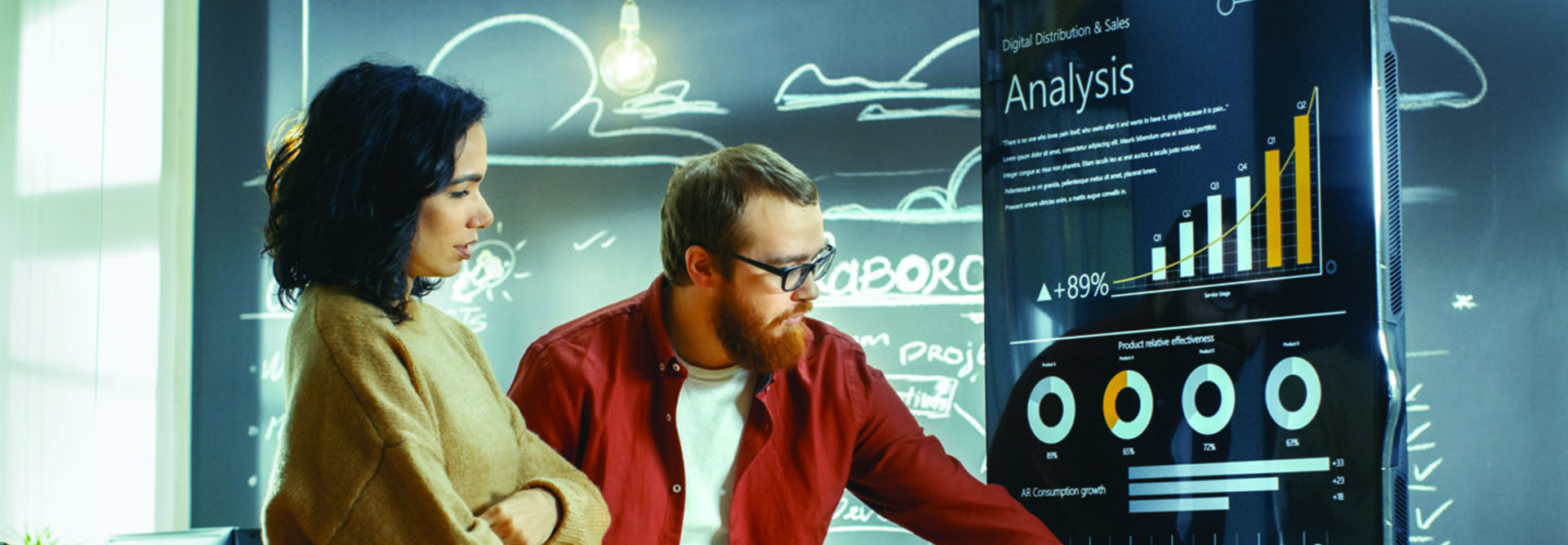How Do Businesses Get Started with Data Visualization?
A compelling visual presentation starts with understanding to whom one is speaking. For example, middle-management peers may want graphically represented business intelligence details, while C-suite executives may prefer slides or dashboards illustrating a high-level view of findings.
“Who are you designing this for?” asks Ellie Fields, vice president of product development for data visualization vendor Tableau Software. “Is it a busy salesperson with 15 seconds to spare for key performance indicators, or a team reviewing quarterly dashboards over several hours?” Visualizations should have a sensible flow and logically lay out different pieces of information, Fields says.
Whomever you are presenting to, there’s one clear rule: Don’t visualize what doesn’t matter. “The biggest thing is not to put into pictures something that you don’t want to make a point about,” says Stephanie Evergreen, founder of reporting and data visualization company Evergreen Data, which offers both public and private workshops on the topic. Audiences don’t want to waste their time and attention on irrelevant information — and presenters shouldn’t be wasting time building slides with data no one cares about, she says.
That doesn’t mean that “dense” slides have no place in business intelligence practice. In a live setting, a presenter should be able to convey his or her main points in five to 10 brief visual slides that can be easily skimmed by the audience, says Nancy Duarte, principal at Duarte, a presentation design and training company. But it’s acceptable to circulate slides with more detailed graphics beforehand, so that the audience has more background and a deeper understanding of the data story going into the presentation.
“Then you can use the meeting time for consensus building instead of a forum for delivering content,” Duarte says. “You can read a document so much faster than sitting through a long presentation.”
READ: Check out how Microsoft Teams is making work more seamless.
What Are the Types of Data Visualization?
Data visualization isn’t just for data scientists or IT experts — everyone is an analyst today, expected to create presentations with strong visuals that will highlight their insights related to their roles. Evergreen has seen a growing number of companies add data visualization training to their budgets.
As more individuals have data visualization as a job requirement, they’ll need to get a handle on what chart options are best to convey their message. The answer is, it depends on what you want to showcase in a particular instance.
“There are a lot of ways to visualize trends and outliers, depending on how much data you have and the questions you want to answer,” says Fields. Bar charts are best for comparing a single measure across categories, while histograms and box plots illustrate and compare data clusters, she explains.
There’s more: Bullet charts, waterfall charts, reference lines, bands and distributions help measure progress against goals. Time series charts help visualize the change of data points over time. Scatterplot charts help show the relationship between two variables. And visualizing data with maps can help answer location-specific questions or aid geographical exploration.
What Are Data Visualization Tools?
Most business intelligence solutions have built-in tools to help users present data effectively. In addition to Tableau, Microsoft Power BI, Oracle Data Visualization and Splunk Dynamic Data are among the leading vendors in the data visualization space.
Visuals can be enhanced with color or text boxes to bring attention to a data point. Duarte offers a free annotation kit for overlaying visual annotations in a chart. “It’s a whole other level of explanation,” she says.
A presentation may have great-looking charts that are calculated to appeal to a particular audience, but that audience can easily lose interest if the presenter takes the approach of walking through the entire analytics process instead of getting down to business.
“Put the important stuff first,” says Satish Nargundkar, professor of managerial sciences at Georgia State University. “A presentation is not about how hard you worked.” Skip the background, he says, and reintroduce the issue to your audience, then back into the visual representation.
How to Prepare Data for Analytics
The data analytics that underlie visualizations should be built on a solid foundation of clean data, says Subhashish Samaddar, professor of data analytics and innovation at Georgia State University. “All data has problems — missing information or bias, for instance — and people with not enough experience can get fooled.”
The presenter might be using data gathered, retrieved and organized by other data analysts, so it’s a good idea for that person to ask questions about the data’s origin, how it was collected and other variables before undertaking analysis to feed visualizations, he advises.
Still, if you wait for perfect data before analyzing and graphing it, you won’t accomplish anything.
“Accept the state of the good, but be very explicit about how much confidence you have in it,” Evergreen says, so the audience can take that into consideration for their decision-making.
A good data visualization platform can enable a culture of self-service analytics by providing governed data and a set of tools to anyone in the business, says Fields. “The critical piece is a governance model that supports self-service analytics at scale — that supports users while making sure the right people have access to the right data.”










